Executive Summary
While there is a plethora of ways that financial advisory firm owners can build and run their practices (from service models to specialties to fee structures and beyond), one of the most complex activities shared by many growing firms are those that involve hiring, training, managing, and retaining employees. And with the increasing shift to remote and hybrid work in recent years, these skills have become even more important. The reality is that advisory firms that help their employees thrive in these shifting work models will more likely be the ones to attract and retain top talent. In a world where less than a quarter of all employees are estimated to be actively engaged in their work, there is one simple yet highly effective strategy that can dramatically improve both employee satisfaction and business results.
In this guest post, Paul White, co-author of "The 5 Languages of Appreciation in the Workplace", shares how firm owners can reap tangible benefits by fostering a culture of authentic appreciation, because having employees who feel they are genuinely valued and appreciated will inevitably lead to higher productivity, lower turnover, and higher client (and employee!) satisfaction ratings.
To set the stage, it's essential to understand what workplace appreciation is and how it's materially different from employee recognition. As while recognition programs typically aim to incentivize desired employee behavior (e.g., by public acknowledgment of positive employee actions), they are often 'one-size-fits-all' efforts that may seem impersonal and contrived. In contrast, genuine appreciation is expressed in a way that is personally meaningful to each recipient and focuses on the contributions that individuals make within the organization... even when they aren't top performers. Moreover, unlike recognition programs, appreciation doesn't necessarily take a top-down approach driven by the firm's hierarchical' org chart' but can instead originate (oftentimes preferably) from colleagues as well as superiors.
Genuine appreciation is inherently personal, and not everyone values appreciation in the same way. Accordingly, advisory firms can use a framework to show appreciation based on 5 different 'languages' as discussed in "The 5 Languages of Appreciation In The Workplace" by Gary Chapman and Paul White (based on Gary Chapman's earlier book, "The 5 Love Languages"). For instance, while Words of Affirmation, the most commonly preferred form of appreciation in the workplace, are characterized by positive and encouraging words, Quality Time generally involves meaningful one-on-one time spent with a valued colleague or leader or just simply spending time together in a non-work setting. Acts of Service can involve lending a hand or even dropping off a snack when a colleague is swamped, and Tangible Gifts are personalized offerings that make the receiver feel special. As the 5th language, Appropriate Physical Touch (e.g., a high five, fist bump, or even a literal pat on the back) doesn't often have a foundational role in most work-based relationships, yet using it to communicate encouragement and appreciation can be valued by some employees. It is crucial to emphasize, though, that the acceptability of interactions involving physical touch is always contingent upon the comfort and consent of the person being touched.
Ultimately, the key point is that advisory firms with team members who feel that they are genuinely valued and appreciated are in a much better position to be successful and to provide outstanding service to their clients. Learning how to express authentic appreciation intentionally, in ways that are meaningful to each individual, is not only the right thing to do in and of itself, but will also help create a healthy workplace and improve a wide array of key performance metrics throughout the business!
Understanding the importance of employee appreciation is a hallmark of informed leadership and is essential for fostering a thriving business environment. Yet, while many informed firm owners recognize this critical component, there is often a general misunderstanding of the factors that actually lead to authentic appreciation in a financial advisory firm. But, by learning to cultivate a culture in which team members feel genuinely valued, financial advisors can enhance the overall success and efficiency of the firm.
The Goal Of Appreciation Goes Beyond Making People Feel Good
While a desired result of communicating appreciation to others is to help them feel good about themselves, that is not the primary objective in a work environment. While boosting team morale is certainly a good thing, advisors also want their firms to run well, achieve their goals, serve their clients well, and reap the rewards for doing so.
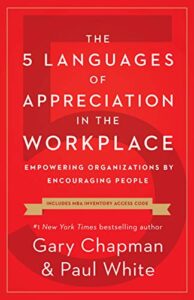 In our book, The 5 Languages of Appreciation in the Workplace, Gary Chapman and I discuss over a decade of research showing the positive results that occur when team members feel truly appreciated. One metaphor that helps understand the role of appreciation is to recognize the function of oil in a
In our book, The 5 Languages of Appreciation in the Workplace, Gary Chapman and I discuss over a decade of research showing the positive results that occur when team members feel truly appreciated. One metaphor that helps understand the role of appreciation is to recognize the function of oil in a
n engine. A mechanical engine has parts that work together to create power. The parts often are in close proximity and must move in sync with one another. But in doing their task, friction occurs; this creates heat, tension, and sometimes sparks. Without oil in between the parts, more energy is required to get the task done, friction increases, and ultimately, the engine may become stuck and unable to move.
Appreciation functions similarly in an organization – it helps team members work together more smoothly and collaboratively (rather than against one another); tension and irritability decrease, and positive results occur more consistently.
Appreciation Leads To Increased Employee Engagement And Positive Outcomes
While over 90% of all businesses are estimated to have some form of employee recognition activities, recent research by Gallup shows that only 23% of employees around the world are actively engaged in their work – less than a third of all employed.
Conversely, studies show that when employees feel appreciated at work, they are more engaged and enjoy their work more than those who have not received affirmation. The following positive results for employees and organizations are substantiated through multiple research studies that we discuss and cite in The 5 Languages of Appreciation in the Workplace:
- Fewer days missed by employees;
- Less employee theft;
- Greater productivity;
- Increased profitability; and
- Higher customer service ratings.
Retention, Recruiting, And Remote Employees
There are 3 key employee issues at the forefront of financial advisory firm leaders' minds, and all are impacted by the degree to which employees feel valued and appreciated.
Retention. In a study done by the Sloan School of Business at MIT during the recent 'Great Resignation' of 2022, a failure to recognize performance was found to be 3 times a better predictor of staff leaving than compensation issues were. Many business leaders misunderstand this situation, often believing that compensation is a bigger driver than appreciation when it comes to employee retention. In fact, Leigh Branham, author of The 7 Hidden Reasons Employees Leave, discusses several studies regarding employee engagement in his book. Branham points out that while one study, conducted across a number of corporations, found that 89% of managers thought employees quit to earn more money elsewhere, a separate study suggested that this percentage is actually much lower, citing a different study finding only 12% of the employees who left their jobs cited money as the primary factor. And in another study, employee experience researcher Rick Garlick examined the relationship between recognition levels received by employees and turnover rates and found a dramatic increase in retention with just a small amount of recognition, concluding that "the amount of recognition [an employee receives] is directly related to the percentage that stay or leave the organization."
Recruitment. Most financial advisors are well aware of the difficulty of recruiting and hiring new, competent team members. The competition for talent is fierce. And there are limits to the compensation packages which can be offered if one wants to have a profitable firm (and not offend current staff). However, most potential employees actually want a positive, healthy workplace more than a higher compensation offer. Feeling appreciated at work is repeatedly identified as one of the top characteristics to become an "employer of choice", where prospective employees want to work.
Remote Work Environment. The reality of remote and hybrid employees is here to stay. And firms that adjust to this reality – while also dealing with the challenges of onboarding, acculturation, and staying connected to those working remotely – will be the ones to successfully recruit and retain quality team members. A series of studies we conducted before, during, and after COVID-19 found that employees staying connected with one another on a personal level was a key factor in maintaining positive emotional health, which means that by acknowledging and fostering team camaraderie, employers can demonstrate appreciation and help sustain a supportive work atmosphere for their remote employees.
Misconceptions About Appreciation Create Unnecessary Obstacles
Authentic Appreciation Isn't The Same As Employee Recognition
When we have discussed employee recognition programs with numerous employees, supervisors, managers, and HR professionals, we found that these groups often reported that their current programs weren't working – they noted that their recognition programs don't have a positive impact on employees or workplace morale. And in many cases, the ways that most employee recognition programs are implemented actually create negative reactions among team members – most notably, sarcasm and cynicism.
Why? Because, as generally implemented, recognition is very different from authentic appreciation. Here is what we found.
Recognition Focuses On Performance
The primary motivation for recognizing an employee is often to provide impetus for them to improve their performance. The goal is for employees to do more (or better quality) work. Often, the focus is on what is good for the company or the manager (who looks good when the team performs well). Many employees see this – and resent it.
Recognition is largely about the employee's behavior and not necessarily about the employee as a person. "Catch them doing what you want and call attention to it" is the mantra. The sole focus is on the employee's behavior and how the manager responds to that behavior (observe the employee and reinforce their positive work). This is an okay starting point but doesn't really get to the heart of the matter.
When giving recognition, the relational direction is top-down. Recognition generally comes from managers and supervisors. But workplace culture has changed over the past decade – younger workers are less impacted by their supervisor than they are by their colleagues.
Recognition is really an organizational function. Recognition activities, such as an automatic email to an employee on their birthday, are generally the same for every recipient and feel impersonal and contrived (often presented by someone they barely know). As a result, they are rarely experienced as a genuine expression of appreciation for the team member as a person. And this can foster feelings of resentment and skepticism among employees, detracting from the intended positive impact of the recognition.
However, this is not to say that employee recognition should be abandoned altogether. While recognition programs have the potential to create cynicism and resentment, they can still be beneficial when done right. Offering employee recognition and rewards can be effective when they meet 2 important criteria: 1) they are designed well (i.e., employers choose the right behaviors to reward, are able to monitor those chosen behaviors, and offer rewards that actually motivate the employee), and 2) they are implemented consistently across time and departments.
Appreciation Focuses On The Person
2 important lessons that the COVID-19 pandemic taught us are: 1) employees are people, and 2) what happens in our lives impacts our work.
We are people, not just production units. Unfortunately, though, our production-oriented culture tends to push us away from that truth. Each of us – advisors, firm owners, and team members alike – all have value beyond what we get done. We have personalities, talents and abilities, life experiences, and perspectives that we bring to work. Some of these dimensions impact the tasks we do, and some do not. But we come to work as a whole person, and this presents ample opportunities to value each other for non-work-related characteristics. For example, I prefer to work with cheerful people rather than grumpy ones – so I can value and appreciate a colleague with a positive outlook and a good sense of humor.
As a result, team members can be valued and receive appreciation for doing tasks well, even when they aren't top performers. This is important because, typically, only the top 10–15% of employees are recognized for high-level performance, which leaves the majority of other team members who rarely hear anything positive. Appreciation fills the gaps.
Team members often need a word or gesture of encouragement, either when they are learning new roles and skills or when they aren't performing at their best because of other issues going on in their lives (a senior parent who needs to move to a care facility; medical issues for a family member; a teenager who is acting out).
What Team Members Want: Authentic Appreciation
Authentic appreciation has a very different feel and quality than traditional employee recognition activities. Appreciation requires more than behavior; it requires a 'heart attitude'. In other words, it has to be genuine; it can't be faked. The beauty of using appreciation is that it doesn't take much – expressing appreciation for others (even difficult colleagues) requires simply getting to know them better and what they contribute to the organization.
Furthermore, appreciation can be communicated in any direction – it doesn't need to be limited to a firm's leadership expressing appreciation for employees who do a good job. One of the exciting principles of appreciation is that colleagues want to know how to encourage and support one another. Appreciation can be expressed from anyone to anyone else in the organization – it is not driven by the organizational chart.
Appreciation is based on personal relationships; whether an organization can truly appreciate an employee or team member is questionable since an organization isn't a person and can't have feelings. Which is why so many employees react negatively to recognition programs – the recognition offered by the organization doesn't feel genuine at a personal level. Authentic appreciation communicated personally in ways that are meaningful to the recipient is what helps team members feel truly valued.
Communicating Appreciation Goes Beyond Using Words
A simple but foundational truth is that not everyone values appreciation in the same way. For example, not everyone likes public recognition or going to social events. For many introverts, going to a 'staff appreciation picnic' is more like torture than a reward for doing a good job.
In his book, The 5 Love Languages, Dr. Gary Chapman presents the different approaches (or 'love languages') that successful couples use to communicate with each other. Drawing from his book, we have applied the same foundational concepts to present methods of communicating authentic appreciation in work-based relationships in the follow-up book I wrote with Gary Chapman, The 5 Languages Of Appreciation In The Workplace. (The languages are the same in name but look different when applied at work.)
 Words Of Affirmation
Words Of Affirmation
The most commonly preferred language of appreciation is Words of Affirmation (46% of employees in the U.S.). While this is the easiest language for most people to understand and use, it isn't always utilized effectively.
Supervisors and managers often use words to encourage their team members. Compliments, a simple "thank you", and praise in front of others are all common examples of how words of affirmation can send positive messages in the workplace.
However, we have found that following a few simple tips can make words of affirmation even more effective in showing appreciation and encouragement to colleagues (and help to avoid some common errors). The most effective words of affirmation have the following characteristics:
1. Be personal and individualized. While blast group emails ("Way to go, team!") are an okay start, by definition, they are impersonal. Direct communication to 1 person at a time and make statements relevant to each individual.
2. Be as specific as possible. In a poll we conducted with thousands of employees, one of the most common phrases team members don't want to hear is "Good job." Why? Because it is general and generic and can be applied to anyone at any time. Additionally, employees with technical roles have commented, "My boss (who isn't technically trained) wouldn't know if I did a good job or not!" Tell the employee what they specifically did that was appreciated – "Thanks, Steven, for getting your report completed and to me on time."
3. Tell the employee why what they did is important – to the person expressing appreciation, to the organization, and to the firm's clientele. While it may seem obvious why what an employee did was valuable, employees don't often see the 'big picture' or understand the impact their behavior has on a number of people in the organization. "Thanks, Steven, for getting your report completed and to me on time because that gives me time to review it and incorporate it into my report to our director."
Importantly, even though words of affirmation may be the most commonly preferred language of appreciation, they're not equally important to everyone. In research that I published earlier this year in the Strategic HR Review, I surveyed over 375,000 employees and found that less than 50% of employees want appreciation through words. That means over 50% of employees want to be shown appreciation in ways other than words. Some believe words are cheap, which is why we encourage leaders to have their team members identify which of the 5 languages of appreciation are most important to them.
Communicating appreciation can be powerful and motivating when it is expressed through positive, encouraging words – especially when they are individualized and specific to the recipient.
 Quality Time
Quality Time
Many employees prefer appreciation shown through the language of Quality Time. In this context, quality time means one colleague spending time with another and giving them focused attention, working collaboratively with them, or just 'hanging out.' We are not talking about simply being in physical proximity to another person.
Quality time was the language of appreciation that really forced us to consider how the languages of appreciation can differ in the specific actions individuals prefer. Workplace quality time often falls into 1 of 2 categories: individual or collegial.
Individual quality time often involves one-on-one time with a supervisor or leader (but may involve valued colleagues as well). An employee who values this type of time is looking for individual, focused attention from their co-worker. Frequently, they want to be able to share thoughts and observations, ask questions, and get input. This type of interaction historically has been valued by older generations of workers.
Collegial quality time centers more on spending time with colleagues, often doing activities together. This may include something as simple as 'hanging out' together during lunch. Or, instead of recording inventory alone, multiple employees work on the task together. Spending time together outside of work (for example, getting together to go to a local festival) is another variation. While these activities may include a supervisor or leader, sometimes team members prefer to connect with one another without the supervisor involved.
Spending quality time with others often does not require a lot of time — maybe 5 minutes just to check in with them – but it does require a person's undivided attention. A person who checks their watch frequently or who takes calls on their cell phone during 'quality time' is not demonstrating that they value the person they're spending time with. Repeatedly rescheduling the date and time to be spent together is also likely to be offensive and can suggest to the other person that they are a low priority.
When, Where, Who?
Feedback from non-manager employees demonstrates a distinct difference between what they desire from their supervisor and what they desire from co-workers.
"The issue of quality time is difficult for me," Holly said, "because it depends on whether you're talking about time with my supervisor or time with my co-workers. Although I like my supervisor – he's a great guy – there are some things I like doing with my colleagues that would feel weird if I did them with my supervisor."
Many employees would echo Holly's sentiments.
The increase in remote workers has added a new challenge for managers and colleagues of co-workers whose primary language is quality time. For those who want to offer quality time as a gesture of appreciation, setting up time for a one-on-one conversation to touch base can be very impactful. Sometimes, this can be easily accomplished by scheduling time either before or after a group conference call. Notably, if in-person quality time isn't an option, videoconferencing can be another effective way to spend quality time together and is often preferred over phone calls, emails, and text messages alone.
Showing appreciation by spending time with colleagues can take different forms; while the investment in effort is minimal, the impact on a team member can be significant. If their primary appreciation language is quality time, this investment can pay huge dividends!
 Acts of Service
Acts of Service
For individuals who cherish Acts of Service as their primary language of appreciation, actions speak louder than words. Their motto is, "Don't tell me you care; show me." This is not about rescuing a low-performing colleague; instead, it's about understanding their role and capacity and offering to help out when they're working on completing a project before a deadline or when they suddenly find themselves swamped with a number of clients to serve. As one team member who values acts of service shared, "It's not that encouraging to me to get a bunch of praise for all the work I've done. A little practical help would be more encouraging."
Here are some basic guidelines for offering acts of service effectively:
- Ask before you help. It is always critical to ask first when considering helping a colleague. Even when it's clear that the individual's primary language of appreciation is Acts of Service, it's still important to check with them first to see if they would like assistance on the current task. If a supervisor or colleague were to dive in to help them with a task when they don't actually want help, it can create tension rather than encouragement.
- Serve voluntarily. For an act of service to be encouraging to a colleague, the action needs to be offered voluntarily. An Act of Service done under the duress of a supervisor ceases to become an expression of appreciation; it simply becomes an act of duty or obedience.
- Check your attitude. There is an ancient proverb that says, "Work done with a cheerful attitude is like rain falling on the desert." We think the opposite is also true: Work done with a negative attitude is like a sandstorm blowing through the desert. Receiving help from someone who is grumpy or who resents having to help is not encouraging.
- Do it their way. When helping out a colleague, it is important to be clear on how they want the task done. If a person's efforts are to convey appreciation for their colleague, they must be willing to do it in such a way that the individual being helped will feel that the task was 'done right'.
- Complete what you start. For those individuals for whom Acts of Service are important, one way not to encourage them is to start a task and then leave it incomplete. If someone is going to help as a way to express appreciation through an Act of Service, they should make sure to get the task done.
Helping with a specific work project isn't the only way to show appreciation to those who value Acts of Service. Other ideas for encouragement include:
- Bring some food when they are working long hours;
- Offer to do some simple tasks (e.g., filing or photocopying) so that they can focus on a higher priority;
- Stay after hours to assist them at an event;
- Volunteer to do some part of the project that can be delegated; and
- 'Run interference' for them by taking phone calls and answering non-urgent emails for them so they can stay focused on the project.
If it's not clear what action would be most meaningful to a colleague, simply asking, "Is there anything I could do for you that would make your work easier?" can be an effective way to find out. While their answer to that question may be surprising, it will provide valuable information on how to most effectively express appreciation to that particular individual.
 Tangible Gifts
Tangible Gifts
When asked to compare the various languages of appreciation in importance to them, employees overwhelmingly don't choose Tangible Gifts as the primary way they want to be shown appreciation. In fact, only 7% of employees identify tangible gifts as their primary language of appreciation. To look at the issue from the opposite perspective, employees choose Tangible Gifts as their least-valued way to be shown appreciation almost 70% of the time.
Why is this important to know? For 2 reasons. First, most employee recognition programs focus highly on giving gifts as a reward for achieving goals. While there is obviously nothing inherently wrong with this, companies actually are wasting millions of dollars giving gifts to employees that they really don't want and that do little to improve performance.
Secondly, giving gifts without showing appreciation in the ways employees desire actually creates a negative reaction. I have had numerous people say to me, "If no one ever says anything positive about the work I do, if they don't stop by and see how I am doing, or if they never help me when I could use some assistance, then a gift feels pretty superficial – especially if the company is paying for it!"
The fact remains, however, that there are a number of people with whom we work who still value receiving Tangible Gifts as an expression of appreciation. If we totally remove gift-giving from our repertoire of interacting with others, then we are at risk of communicating appreciation or encouragement in ways that are not meaningful to these team members.
Who, What & When?
2 key components are necessary for Tangible Gifts to be truly encouraging to those who receive them.
First, you need to give gifts primarily to those individuals who appreciate them. While a gift is extremely important to some individuals, it provides very little affirmation to others. (Note: many people who like to give gifts do not necessarily like to receive gifts as an act of appreciation.)
The second key component for an effective expression of appreciation through tangible gifts is: You must give a gift the person values. Although it is helpful to know that an individual's primary or secondary language of appreciation is Tangible Gifts, the gift giver still has the dilemma of which gift to give.
The appreciation language of Tangible Gifts is an example where the saying "It's the thought that counts" is absolutely true. To individuals who feel valued by receiving a gift, a key factor is that the person who gave them the gift took the time to think about what they would like and what would make them feel special and appreciated. Conversely, thoughtless gifts – those gifts bought hastily in response to tradition or a feeling of obligation – with no real personal investment of time or reflection not only miss the mark but also communicate a negative message.
Accordingly, the key to successful gift-giving is to get to know the person. This can be done with co-workers over time by taking note of those activities that they like to do in their spare time. This will give a good indication of their interests and places they like to go for fun. See if they enjoy watching sports (and which teams are their favorites), what their leisure activities are, and what magazines they read. Also, listen to (and even inquire about) where they like to go out for dinner or for dessert. With this information, gift givers are far more likely to give something the employee would appreciate.
When we talk about Tangible Gifts as a means of showing appreciation to co-workers, it is important to clarify that a gift does not always have to be a 'thing'. In fact, more often than not, the gifts that people appreciate the most fall in the category of 'experiences' rather than things and can even include a supervisor offering their employee time off from work, perhaps from completing a big project early.
For example, these types of gifts can include the following:
- Tickets to college or professional sporting events (basketball, baseball, hockey, football);
- Gift cards to restaurants, coffee shops, or ice cream parlors;
- Tickets to cultural events (music, theater, symphony, botanical gardens);
- Recreational activities (bowling, laser tag, ice skating, paintball);
- Certificates to a spa for a manicure or to a local country club for a free round of golf; or
- Shopping 'bucks' at a local mall.
Note that a gift doesn't have to cost much (if any) money to be appreciated by the employee receiving the gift. Given the technological tools we now have available and use frequently, web-based gifts can carry significant meaning. Online articles, videos, websites, and podcasts that provide information relevant to a co-worker's life can be valuable (for example, sharing a website with soccer training drills for a colleague who is starting to coach their child's soccer team.) Humorous memes and videos can also lighten a colleague's day with a touch of humor and joy, showcasing that thoughtful gestures, big or small, digital or physical, can all contribute to a positive and supportive work environment.
While the appreciation language of Tangible Gifts is rarely the primary language of most employees, giving gifts can be highly effective when done in combination with the person's primary language of appreciation. A small personal gift, when given along with sending a note of thanks, stopping by to visit, or helping with a task, can be deeply meaningful to the recipient. And by putting some extra thought into the gift, the return on investment will multiply in its positive impact on the colleague receiving the gift!
 Appropriate Physical Touch
Appropriate Physical Touch
When we first started investigating how best to apply the love languages to work-oriented relationships, we utilized all 5 of the languages, even though we knew it would be a challenge to translate the language of Physical Touch appropriately. We found that the number and variety of these actions are fairly limited but often important, nonetheless.
Many people ask, "Is there any appropriate place for physical touch in the workplace?" This question seems most often asked either by those who highly value physical touch in their personal relationships or by those who are highly reactive to physical touch.
While we believe there is a role for Appropriate Physical Touch in work-oriented relationships, it is crucial to emphasize that the acceptability of such interactions is always contingent upon the comfort and consent of the individual being touched. Determining if something is appropriate will depend on the person, the type of work relationship, and the organizational subculture in which the behavior occurs. Some actions are fine for certain individuals but would make others feel uncomfortable.
All Touches Are Not Created Equal. The touches that make one person feel affirmed may make another person feel uncomfortable or intimidated. An individual's view of what is appropriate and inappropriate in the workplace may differ greatly from person to person. We must learn from the person we are interacting with what they perceive as an affirming touch. While there are non-verbal cues to watch for – stiffening or withdrawing when touched – the surest way to find out is simply to ask. For example, when celebrating the successful completion of a large project, you might ask, "You okay with a high five?"
The most common form of showing appreciation physically in the workplace is usually an expression of spontaneous celebration – a 'high five' when finishing a project, a 'fist bump' when a problem is solved, or a congratulatory handshake when a large sale is closed – are all used frequently in work-oriented relationships and are often given without a lot of forethought. Interestingly, cross-cultural researchers have found that a pat on the back is almost universally accepted as an act that communicates appreciation. Even so, it is important to recognize that each person is unique, and not everyone will appreciate or be receptive to being touched. This underscores the importance of understanding when and how to communicate appreciation through Appropriate Physical Touch.
The Benefits Of Physical Touch. Communicating appreciation by physical touch can have a positive impact in the workplace when done appropriately. A little real-life observation will probably affirm that physical touch is a language often used in the workplace. When something good happens in the workplace, people often acknowledge and celebrate the positive experience with handshakes, fist bumps, high fives, pats on the back, and other physical gestures, especially in less formal settings such as over a meal, in an after-work social setting, or at a company picnic. There can be a surprising amount of encouragement that is expressed through forms of Appropriate Physical Touch in a warm, supportive, positive fashion.
Also, learn about cultural (and regional) differences. For example, co-workers from East Asia (e.g., Japan, China, Korea) tend not to touch others, with the exception of a handshake. Conversely, Latin Americans and those from southern Europe come from cultures that tend to be more comfortable with physical expressions of greeting and celebration.
So, while we do not believe communicating encouragement and appreciation through Appropriate Physical Touch is foundational in most work-based relationships, neither do we believe the workplace should become a completely 'touchless' environment. Appropriate acts of physical expression are valued by many with whom we interact on a daily basis and can add a depth of warmth to work-based relationships.
Communicating Appreciation Is Not The Sole Responsibility Of Leaders
When we first started applying the 5 languages to work-based relationships, our initial focus was on managers and supervisors communicating appreciation for their employees within the workplace. In the past, an employee's relationship with their direct supervisor was found to be one of the most influential factors on whether or not the employee enjoyed their job. So, our early focus was on training supervisors and managers to communicate appreciation effectively to their team members.
While this was a good starting point, we quickly learned that focusing solely on how management communicated appreciation was too narrow. A huge change within the workplace in the last decade has been the influx of millions of younger employees and the exodus of older generations. This shift has had a dynamic effect on the look, feel, and structure of workplace culture. As the proportion of employees and leaders from younger generations increases, the supervisor-employee relationship has declined in importance, and in its stead, building good relationships between co-workers has become more meaningful to employees.
Younger Employees Desire Appreciation From Colleagues
Although most employees like to receive positive messages from their supervisors, getting encouragement and support from their co-workers has become increasingly important. Moreover, team members repeatedly tell us that they want to learn how to encourage and support their colleagues. In fact, we are finding that the groups most successful in creating a positive work environment are the ones that implement the principle of showing appreciation and encouragement among team members.
In past decades, it was common to hear people say things like, "People don't leave a job; they leave a supervisor." However, recent employee engagement surveys have found that employee satisfaction is more closely correlated to the connections they share with their co-workers rather than those they share with their direct supervisor.
This focus impacts each of the languages of appreciation. Younger employees, as a group, tend to desire more collaboration in completing tasks. They value compliments from their peers. Spending time together (whether at work or outside of work) is important to them. Small personal gifts and celebratory actions seem to feel more personal and meaningful to them.
The Weight Is Too Heavy For Supervisors And Managers Alone
Our experiences over the years have made it clear that expecting managers and supervisors to be the sole 'appreciators' is unrealistic (and ineffective). As a result, we expanded the emphasis on top-down communication to teaching the whole team how to communicate authentic appreciation, which has led to a greater impact within work groups.
Clearly, appreciation from leaders helps lay the foundation for building a culture of appreciation, but including peer appreciation creates numerous positive results for teams. The following is a list of just a few benefits:
- Lightens the load (and perceived load) on managers and supervisors to provide all of the relational support within a team.
- Supports the focus of younger employees on peer relationships in the workplace.
- Allows for appreciation to be applied and communicated even if a manager/supervisor isn't interested or involved.
- Keeps team members engaged and empowers them to make a difference in their work culture.
Just to clarify, we are not proposing that leaders give up their efforts to show recognition and communicate appreciation to team members. But when employees and supervisors consistently and effectively communicate appreciation to their colleagues, positive results occur more quickly and are more dramatic in their intensity, and the 'staying power' of their effect is longer lasting.
Ultimately, authentic appreciation communicated by both leaders and co-workers can lead to a positive, supportive work environment that others will envy.
Initial Steps To Creating A Culture Of Appreciation
Creating and shaping a healthy workplace culture involves both intention and time. A workplace culture will develop over time, whether the firm owner is intentional or not. Culture is essentially the cumulative result of structured processes put in place and the thousands of individual interactions between employees, leaders, clients, and strategic partners.
Unless a firm is brand new, it already has a culture. The question is whether it is healthy and what type of workplace environment firm owners desire.
Here are some workplace characteristics to consider as firm owners and their teams identify the type of culture they want their firm to develop:
- Positivity (cheerfulness, a 'can-do' attitude, humor) or negativity (complaining, grumbling, pessimism)?
- Cooperation and collaboration or unwillingness to help others and territorialism?
- Honesty and integrity or deceit (withholding information, not telling the whole story)?
- Accepting responsibility for actions and choices OR blaming, making excuses, and defensiveness?
The following sections offer 3 practical steps that can help advisors and firm owners achieve the culture they desire for their workplace.
Learn More About Developing A Culture Of Appreciation In A Healthy Workplace Environment
Many advisors have invested much of their time gaining knowledge related to the technical and professional aspects of financial advising, which is obviously foundational to providing ethical, practical, and valuable advice to clients. And many have also worked hard to become better leaders, grow a financially successful business, and become attuned to their clients.
But the topic of how to create a healthy workplace probably has gotten less attention (or has been less cohesive and more 'hit or miss'). Here are a number of resources that can help in 2 ways: First, they support creating a culture of appreciation in the workplace, and second, they provide a broader view of building a healthy workplace environment in general.
Building A Culture Of Appreciation
The following resources will assist advisors and firm owners in creating a positive, healthy culture through authentic appreciation:
- A simple, easy-to-read introduction to the 5 languages of appreciation is Sync or Swim, which I wrote with Dr. Gary Chapman and Harold Myra. It is written as a fable (similar to the classic Who Moved My Cheese?). Takes about an hour to read.
- The 5 Languages of Appreciation in the Workplace is a seminal work that provides foundational research on the importance of appreciation, a description of each appreciation language, and a discussion that addresses the practical issues of applying the concepts to daily work life.
- The Motivating By Appreciation Inventory is an online assessment that identifies each person's primary, secondary, and least-valued appreciation language along with the specific actions most meaningful to them. Group summary reports for teams can also be produced.
- The Appreciation at Work online "Train The Trainer" course. A self-paced 2-hour course that instructs how to implement authentic appreciation with teams via videos, slides, learning activities, handouts, and a facilitator's guide.
- The Vibrant Workplace follows up the 5 languages of appreciation by addressing the 10 most common challenges in creating a culture of appreciation and how to overcome them.
Additional Workplace Culture Resources
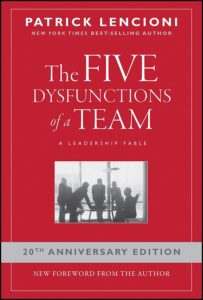 Numerous additional resources are available that address broader workplace culture issues, including:
Numerous additional resources are available that address broader workplace culture issues, including:
- The 5 Dysfunctions of a Team by Patrick Lencioni
- Connection Culture by Michael Lee Stallard
- Integrity: The Courage to Meet the Demands of Reality by Henry Cloud
- Crucial Conversations by Grenny, Patterson, McMillan, Switzler & Gregory
Discover How Team Members Prefer To Be Shown Appreciation
People often ask: "What is a good way to find out how your colleagues like to be shown appreciation?"
Before we get to that, let's consider a couple of ineffective ways to learn how co-workers like to be appreciated. First, asking someone straight out how they would like you to show appreciation is a bad idea – the question, "If I want to show you appreciation, what would you like me to do?" will most probably be the start of an awkward conversation in most relationships at work. Also, if someone were to ask this question, they probably wouldn't get much useful information. Most people would just respond, "I don't know – just say 'Thanks' when I do something." And that is about all they'll get.
Secondly, while it's possible to determine how a person likes to be loved in a personal relationship simply by observing them (often, by paying attention to what they ask for in the relationship), there generally are not enough 'data points' (that is, example situations) to collect through observation alone in workplace relationships to make a judgment on how a colleague prefers to be shown appreciation.
Important Variables In Learning About Appreciation Language
Over time, we have learned that a few core issues are important in order to correctly identify the ways others want to be shown appreciation. First, it's crucial to get the person's appreciation language right. This seems like an obvious step, but it's one that is often skipped over by managers, supervisors, and colleagues.
Many people assume that their colleagues like to be appreciated in the same ways they are. However, even if someone were to guess the most commonly chosen appreciation language (Words of Affirmation), they would be wrong over 50% of the time.
A second key lesson (unique to work-based languages of appreciation) is that just knowing a person's appreciation language isn't sufficient – the specific actions important to them within their primary language also need to be identified. For example, Cynthia may be encouraged by Words of Affirmation, but she doesn't want attention called to her in public; she values a personal note. Similarly, James' language is Quality Time, but he isn't really that excited about spending time with his supervisor; he'd definitely prefer going out with his close colleagues after work.
Besides recognizing the specific actions that matter the most to someone, it's also important to identify who they value receiving that appreciation from the most. While Jayden would enjoy having some of his colleagues over to watch a game together over the weekend, he would feel weird having his supervisor show up. Or Lia may value receiving a handwritten note of encouragement from one of her female colleagues, while receiving that type of note from her married male supervisor would definitely feel awkward for her.
The MBA Inventory And How Other Work-Based Personality Tests Can Offer Complementary Insights
In development for over 13 years and taken by over 395,000 individuals across the globe, the Motivating By Appreciation (MBA) Inventory provides an individualized report that helps co-workers and leaders understand how to express appreciation to one another in ways that are uniquely meaningful to each person (for a downloadable sample of the MBA report, check out the assessment taken by Erica Mito, Senior Technical Editor for Nerd's Eye View!). The MBA Inventory report identifies the individuals' primary and secondary languages of appreciation, as well as their least valued language (which can be a blind spot for them).
Additionally, the employee is able to share the specific actions most meaningful to them and from whom they desire those actions. Our Expanded MBA Inventory also compares results with the preferences of the general population, and, of critical importance, they are also able to identify the ways a person doesn't want to be appreciated – so others can avoid making an embarrassing mistake (or wasting time and energy doing things not valued by the recipient).
In addition to each person receiving an individual report, group summary reports can be created that summarize the results for teams of various sizes, including the languages and preferred actions of each team member.
Interestingly, we have conducted research with the DISC personality assessment and an online version of the Myers-Briggs Type Indicator to explore how the various assessments are related, and have found that the MBA Inventory assesses very different behaviors and preferences than each of these personality assessments and that they can actually be used together for a clearer picture of the person. Essentially, general personality assessments identify what the team member desires to be appreciated for, while the MBA Inventory specifies how to communicate appreciation effectively.
For example, team members who score high in the Dominance trait (measured on the 'D' scale) on the DISC assessment typically would want to be acknowledged for their leadership and decision-making. But one person may value being appreciated through Words of Affirmation, while another would prefer some Quality Time with their team. Similarly, not all who score high in Conscientiousness (the 'C' scale) on the DISC want Words of Affirmation, but they may value Acts of Service by receiving help from a colleague when they are behind on a time-limited task (but the person helping better make sure they do it correctly… and that they do it their colleague's way!).
Implementing Authentic Appreciation Within The Firm
Beginning to apply the 5 languages of appreciation to the workplace, like any cultural shift, works best through a series of steps. First, become familiar with the foundational concepts. The easiest, most direct way is to read (or listen to) The 5 Languages of Appreciation in the Workplace. An alternative is to watch one of our introductory videos located on the Appreciation at Work YouTube Channel.
Next, begin to share interests and ideas about appreciation with colleagues. Introduce them to the book, an introductory article like Appreciation Makes Business Sense, or one of the resources (videos, articles, podcasts) hosted on the Appreciation at Work website. Follow up by asking them to share their thoughts and reactions.
The next step taken by many companies is to introduce the core concepts and terminology regarding how to communicate authentic appreciation within the organization. This can be done either with the management team (in a large organization) or, in a smaller firm, with the team as a whole. Appreciation at Work has numerous trained facilitators (including myself) who are available to present the information live or virtually.
For some firms, having a half-day training for team members is an excellent way to get the process going. This can be done either by an internal team member (such as a human resource professional or corporate trainer) who takes the Appreciation at Work online "Train The Trainer" course and who then brings the training back to the team, or by one of the many Appreciation at Work Certified Facilitators available. Having an internal facilitator works well for larger firms because they can conduct training with multiple groups in a half-day session or over a series of weeks. Either way, videos, slides, and interactive activities are available to support the practical implementation of the training.
One of the core strengths of the Appreciation at Work process is that it is easily implemented. The resources are adaptable to different settings and roles, being able to be used by front-line employees, supervisors, and managers immediately.
Andy Bailey, Certified Recognition Professional
Employee Recognition, Events, & Corporate Citizenship Manager
DIRECTV, LLC
Having a firm in which team members, from owners to part-time staff, feel valued and appreciated is a key component for having a successful, effective business. Learning how to communicate authentic appreciation in ways that are meaningful to each individual will lead to a more positive workplace, with increased collaboration, lower staff turnover, and a greater ability to serve clients well!


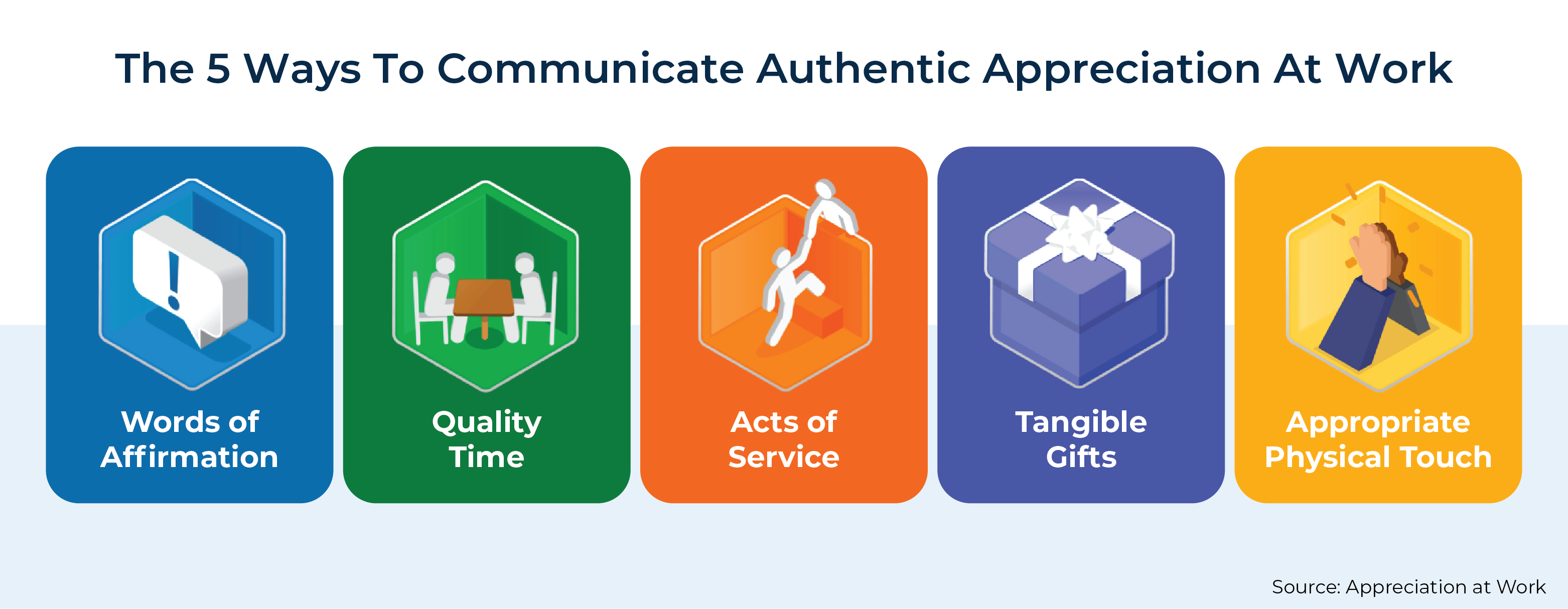


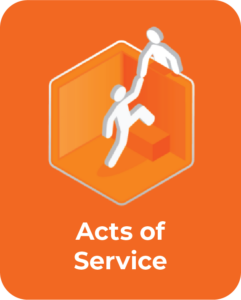

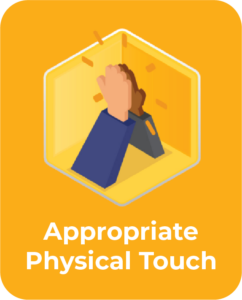



Leave a Reply